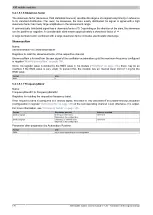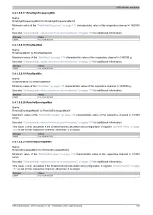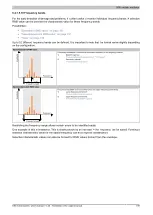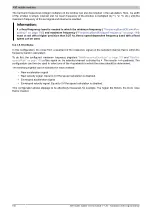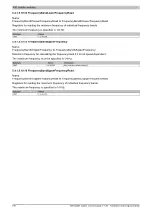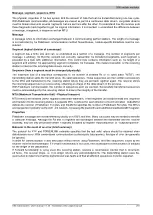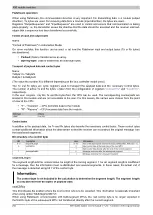
X90 mobile modules
192
X90 mobile system User's manual V 1.20 - Translation of the original manual
The harmonic frequencies (integer multiples) of the window can also be included in the calculation. Here, the width
of the window is simply retained and the mean frequency of the window is multiplied (by *1, *2, *3, etc.) until the
maximum frequency of the set signal and channel is reached.
Information:
If a fixed frequency band is needed in which the minimum frequency (
"FrequencyBandXXLowerFre-
quency" on page 195
) and maximum frequency (
"FrequencyBandXXUpperFrequency" on page 196
)
must be set with a higher precision than 0.25 Hz, then a speed-dependent frequency band with a fixed
speed can be used.
5.4.1.5.10.3 Noise
In this configuration, the noise from a quadrant of the respective signal on the selected channel that is within the
frequency band is calculated.
To do this, the configured maximum frequency (registers
"MaxFrequencyEnvelope" on page 185
and
"MaxFre-
quencyRaw" on page 186
) of the signal on the selected channel is divided by 4. This results in 4 quadrants. The
configuration can then be used to select one of the 4 quadrants in which the noise should be determined.
The following signals can be selected for each channel:
•
Raw acceleration signal
•
Raw velocity signal. Equal to 0 if the speed calculation is disabled.
•
Enveloped acceleration signal
•
Enveloped velocity signal. Equal to 0 if the speed calculation is disabled.
This configuration allows slippage to be effectively measured, for example. The higher the friction, the more noise
that is created.

